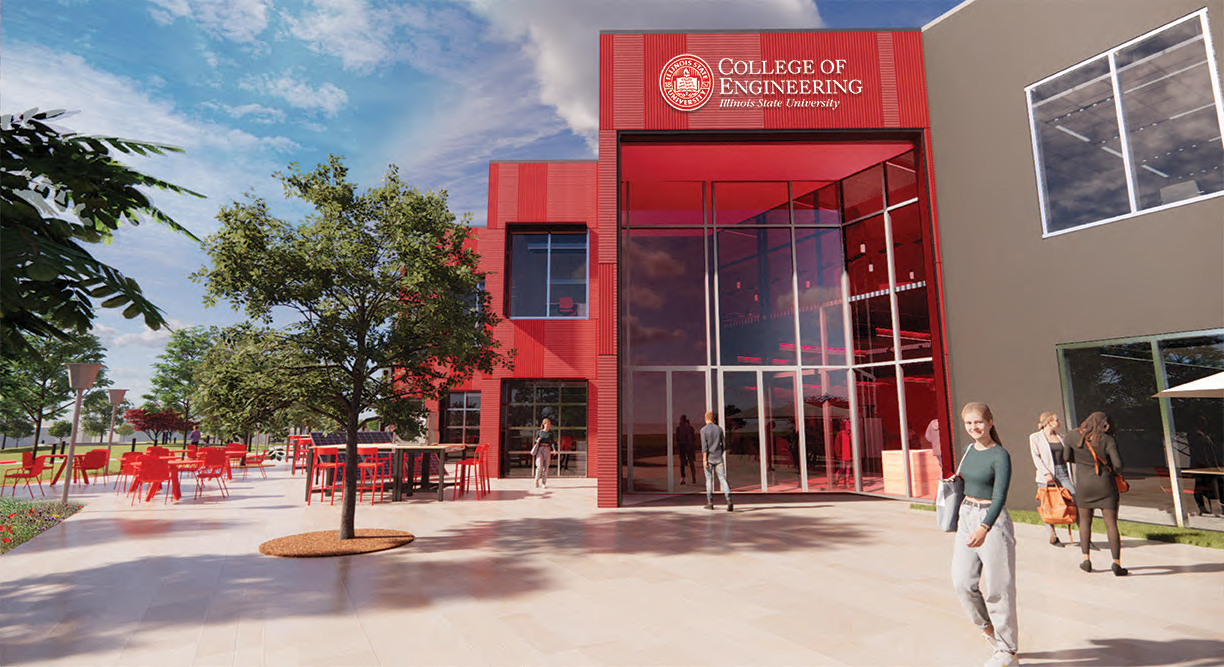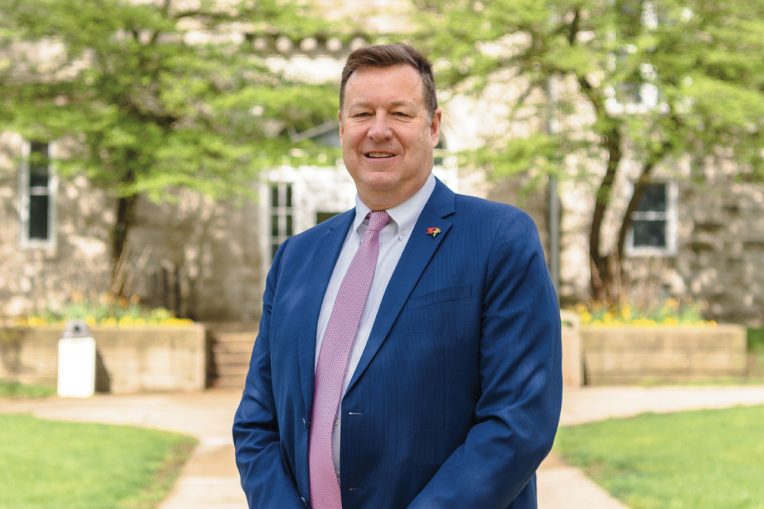Over the past year, Illinois State University has been laying major building blocks for the new College of Engineering. One of the most important foundational pieces was set in early 2023 when Dr. Thomas Keyser was hired as the college’s founding dean.
Since then, Keyser has been preparing the college for the start of classes in fall 2025. He is helping transform Old Union and Williams Hall into the college’s temporary space and the John Green Building into its permanent home. He has brought on two department chairs—Dr. Nesrin Ozalp, chair of Mechanical Engineering, and Dr. Vijay Devabhaktuni, chair of Electrical Engineering—and is looking to hire an associate dean, a diversity officer, and six professors. He is seeking experienced faculty who can develop the curriculum for the three undergraduate majors, in electrical, mechanical, and general engineering.
Appears InKeyser has been charged with creating a college that will focus on workforce development, student success, and diversifying the engineering field. Forming relationships in the private sector will be key to meeting those objectives.
“I probably have two meetings a week right now with local industry, discussing what their needs might be and examining what they do,” Keyser said last August. “Yesterday, I was just at Rivian and next week I’m headed out to ADM in Decatur and Caterpillar in Peoria. So that gives you an idea of whom we’re asking about how we can serve their needs with respect to undergraduate students.”
Keyser arrived at Illinois State after serving as the dean of the College of Engineering, Technology and Management at the Oregon Institute of Technology. Previously, he taught at Western New England University, Ohio University, the University of Southern Colorado, and Clemson University, and worked as an industrial engineer with McDonnell Douglas Space Systems. He has conducted research in distributed computing, cost estimation, and manufacturing processes.
Keyser spoke to Redbird Scholar magazine last semester about the college and what role research will serve.
What are you looking for in the new faculty?
We hope to bring in more seasoned faculty at first. We need someone who understands undergraduate education, can teach, can set up labs, can design courses to fit into what we want to do. They may have several research interests, and down the road, all of our faculty will have some research expectations. We’re going to start off as an undergraduate institution, but that doesn’t exclude us from doing undergraduate research or sponsored research or even having postdoctoral students that we can hire to come in and help us.
Looking at my two department chairs, my mechanical engineering chair is an expert in thermal science, and her research area, in a very general sense, involves her taking natural gas and cracking it to get hydrogen out as an alternative energy source. And my electrical engineering chair is a well-known researcher in artificial intelligence.
What kind of research facilities will the new College of Engineering Complex have?
There’ll be some opportunities to research with the equipment. If we look at something like additive manufacturing, commonly called 3D printing, there’ll be a lot of different opportunities to do research with respect to the material that’s printed. We will have equipment that we test the properties of printed material and compare that versus materials made using traditional methods such as forging. Many of the standards for engineering are based on that traditionally produced material, whether it’s standards for bridges or pressure vessels. So that’s one simple instance, but there’ll be hundreds that could come up.

How important is research to a typical engineering faculty member?
Well, there are faculty that don’t think of themselves as researchers. They think of themselves as educators, but their research lies in engineering education. One of our biggest conferences is the American Society for Engineering Education, and there are journals and different opportunities for funding. The majority of our faculty will have research interests in one of the subfields of engineering.
Beyond federal agencies like the National Science Foundation, will industry funding be an important funding source for research?
Yes, getting research funding from industry often involves having a contact. If you look at where I’ve received research funding over my career, it’s from the agencies you mentioned, the National Science Foundation and the U.S. Department of Agriculture, but then I have found other sources like Boeing and General Electric.
A lot of faculty will pursue the traditional routes, but many faculty will already have those industry contacts. And they’ll do research very focused toward an industry need. This research will provide opportunities for students to do undergraduate research and beyond.
Do you see student research playing a role in a student’s workforce development, one of the pillars of the college?
Industry is going to be very interested in our curriculum and what skills our students will have when they graduate. They have some specific needs and they have some general needs, and I think we can satisfy that. But at some point, I want when a company has a problem, they come to us, and our faculty can help them with that, whether that be through pure research or applied research. I think we’ll be dynamic enough to adjust to that.

